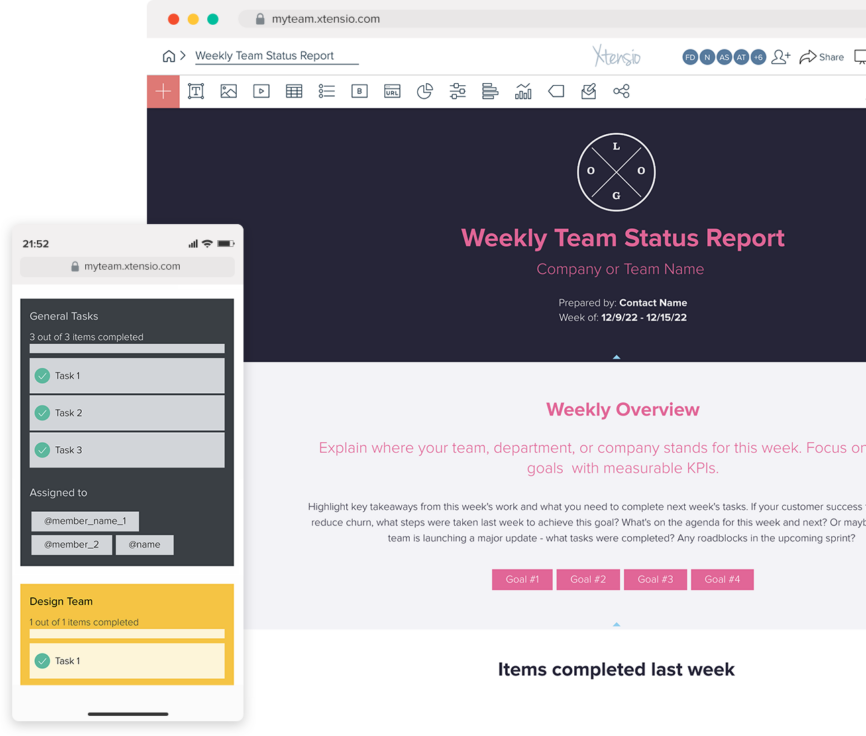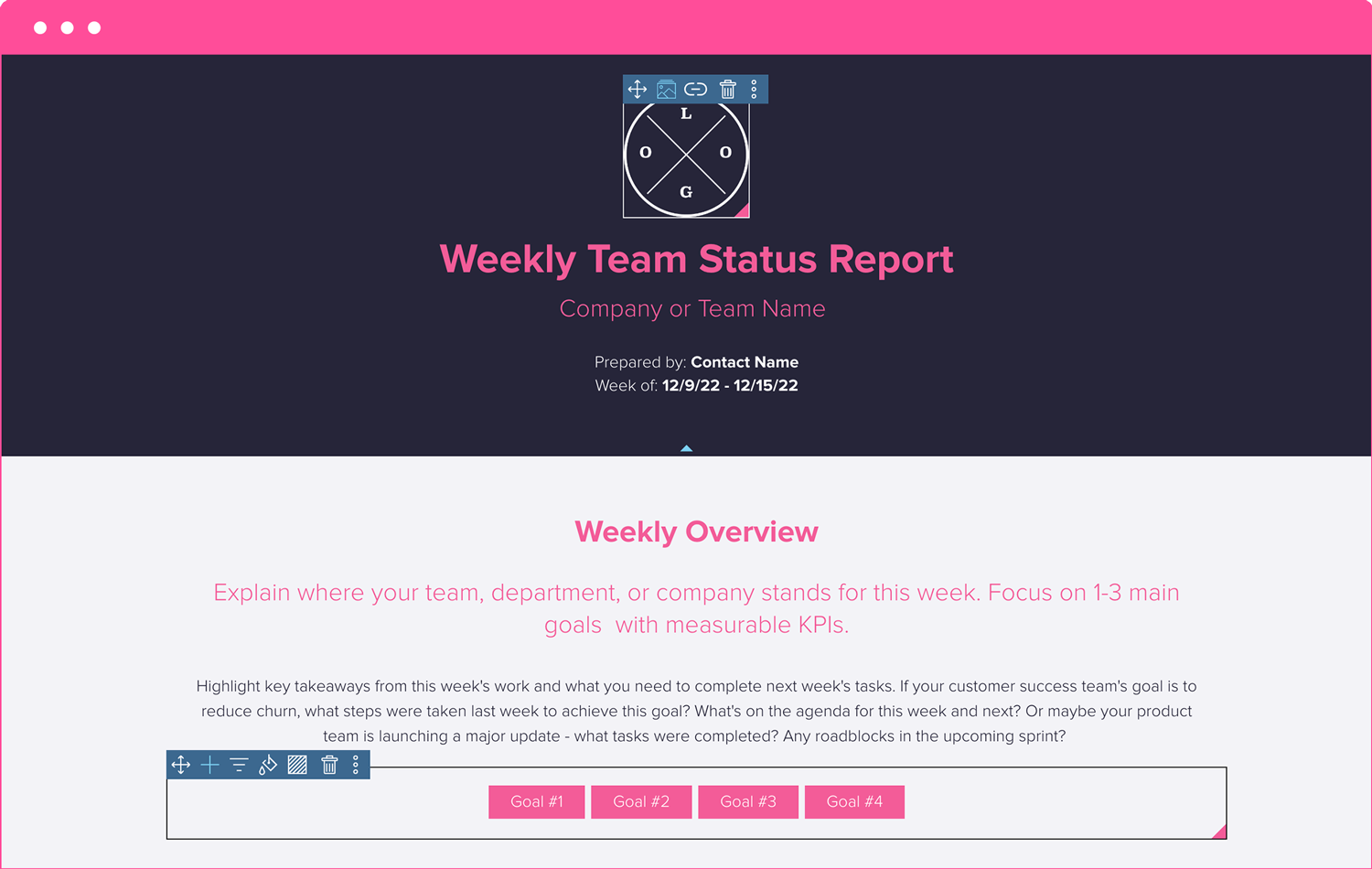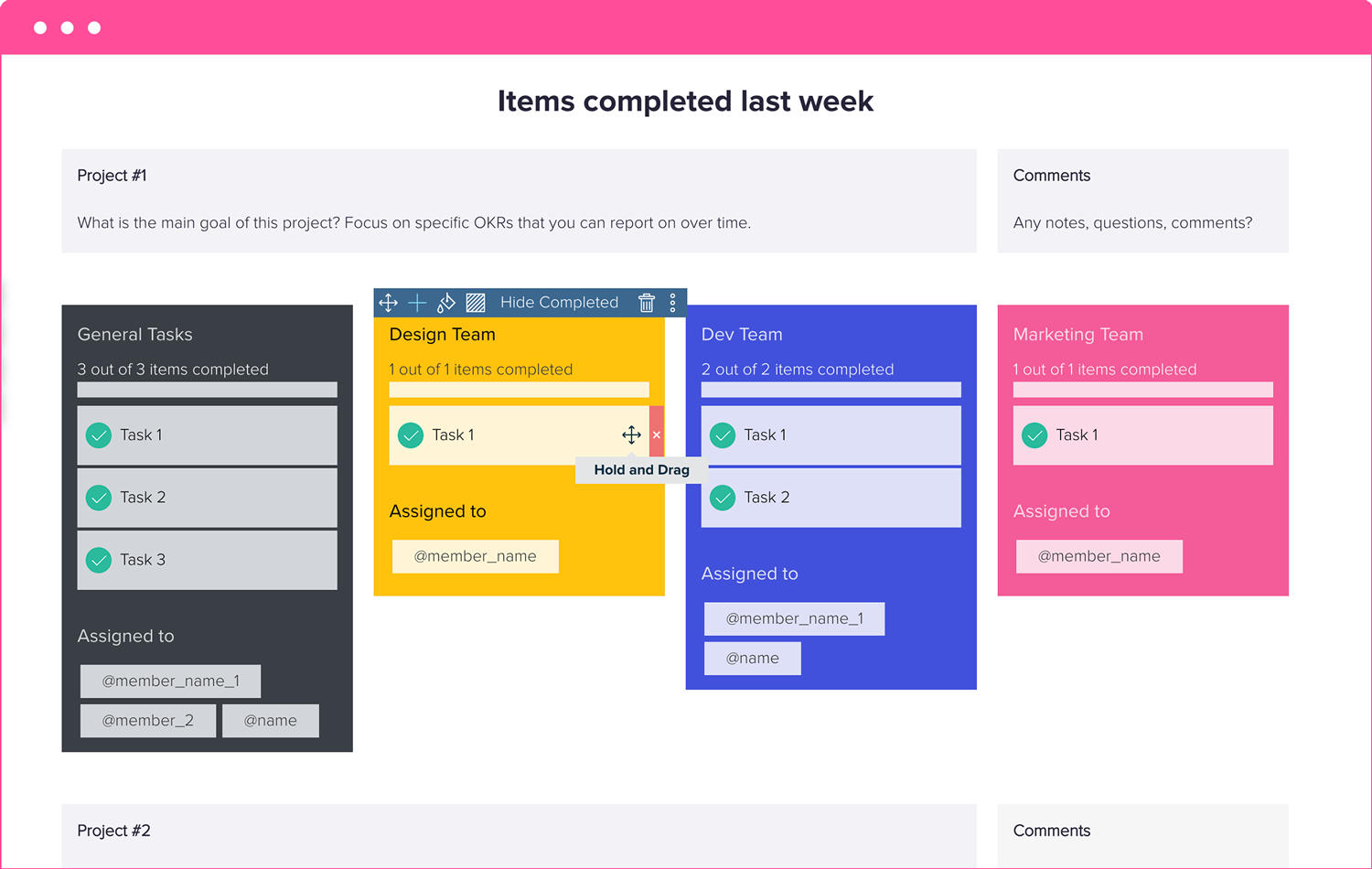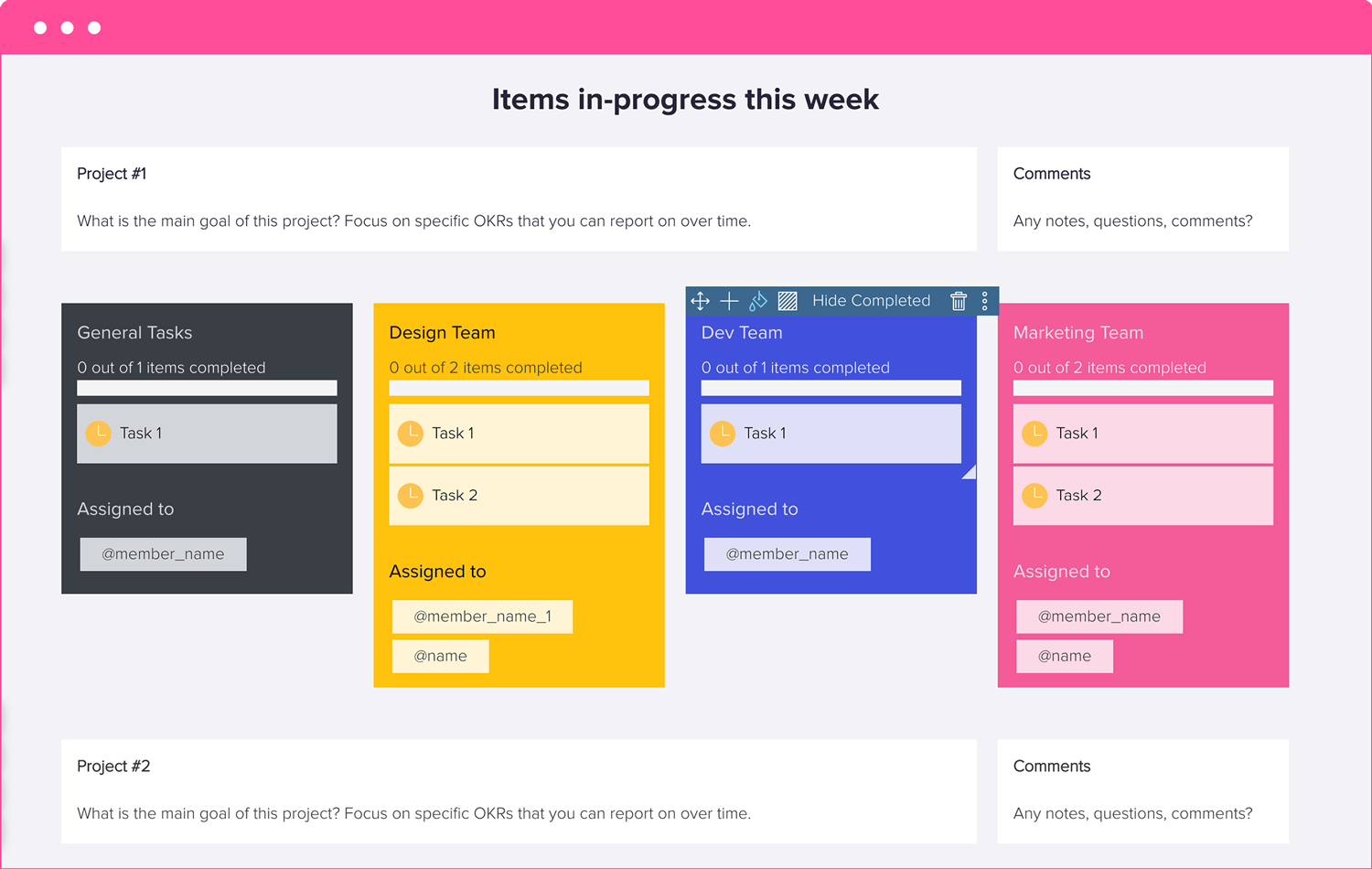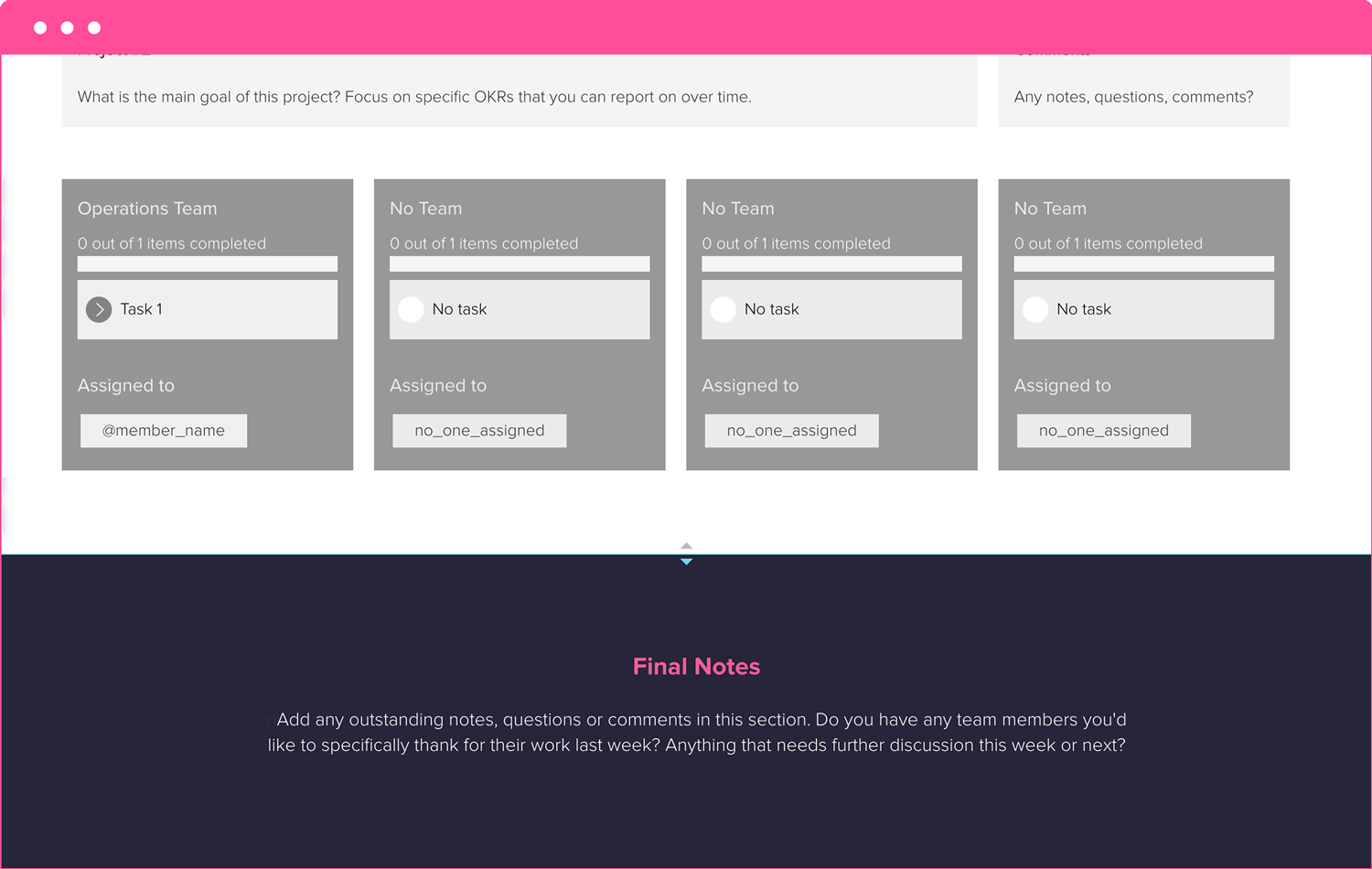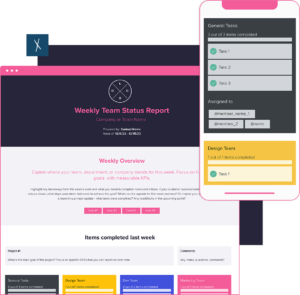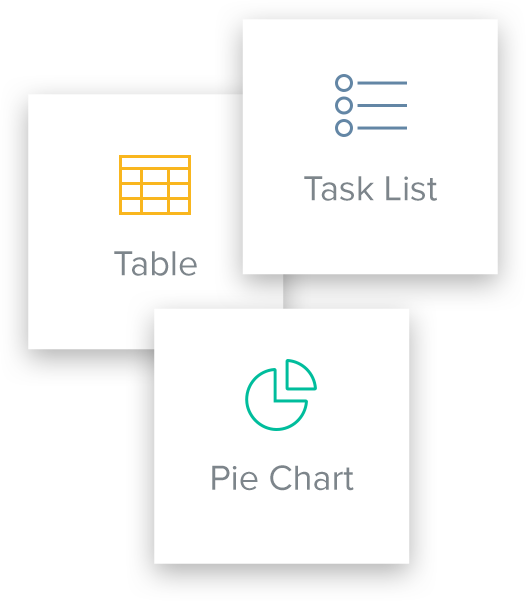How To Write A Team Status Report
Updated by Xtensio
The team status report outlines all work done during the previous week, lays out what is on the schedule for the current week and describes how activities contribute to the completion of a task or a project, or how each one brings the team closer to achieving their target goals. These reports provide managers and executive staff with a clear and accurate picture of the performance in a company related to a specific job, project or goal. Use this step-by-step guide to create your weekly team status reports, easily. Explore this template.
Xtensio is your team space for beautiful living documents.
Create, manage and share business collateral, easily.
Table of Contents
Your guide to creating team status updates that your team wants to read
The weekly team status report outlines all work done during the previous week, lays out what is on the schedule for the current week, and describes how activities contribute to the completion of a task or a project, or how each one brings the team closer to achieving their target goals. Teams use weekly status updates to stay on task and on target.
Ongoing reports will help:
- Establish an efficient communication path to maintain visibility in your team’s activities and tasks.
- Increase productivity, improve employee engagement, and foster faster processes.
- Ensure stakeholders have all the information needed for decision-making.
The most important thing that the team status updates can help with is ensuring that your team’s work gets done on time. Reporting is important in project management and Xtensio’s free team status report template makes it easy to keep track of productivity, roadblocks and deadlines your team may run into.
Create your team status report header and weekly overview
Introduce your status report by adding your company name, the project name and the name of who prepared the report. You will also want to add the date so it’s easy to go back and reference these reports for your team, managers and stakeholders. You can update the logo, the folio color scheme and background to match your company branding.

QUICK TIP: Once you set up your header section, you can save a custom template to easily repurpose for your ongoing weekly team status updates reports.
Give a high-level overview of the key takeaways from your team’s work last week
Explain where your team, department, company stands for this week and what you need to complete next week’s tasks. Focus on 1-3 main goals with measurable KPIs. Use the tag module to easily visualize major goals your team has accomplished this week.
For example, if your customer success team’s goal is to reduce churn, what steps were taken last week to achieve this goal? What’s on the agenda for this week and next? Or maybe your product team is launching a major update – what tasks were completed? Any roadblocks in the upcoming sprint?
Detail 2-3 major projects and individual tasks that your team worked on last week, items that are in progress this week, and items that are on the roadmap for next week
Looking at the past, present and future, list major projects and tasks for each department. What is the main goal of each project? Focus on specific OKRs that you can report on over time. It’s a good idea to indicate which team member is in charge of each item and use color-coded progress updates to call out statuses for each task.
You can also add notes, questions, comments next to each project. While you won’t want to include every little detail about how your projects are going, some people will want to know more or will need more background information so you can also link other resources and documents as needed.
